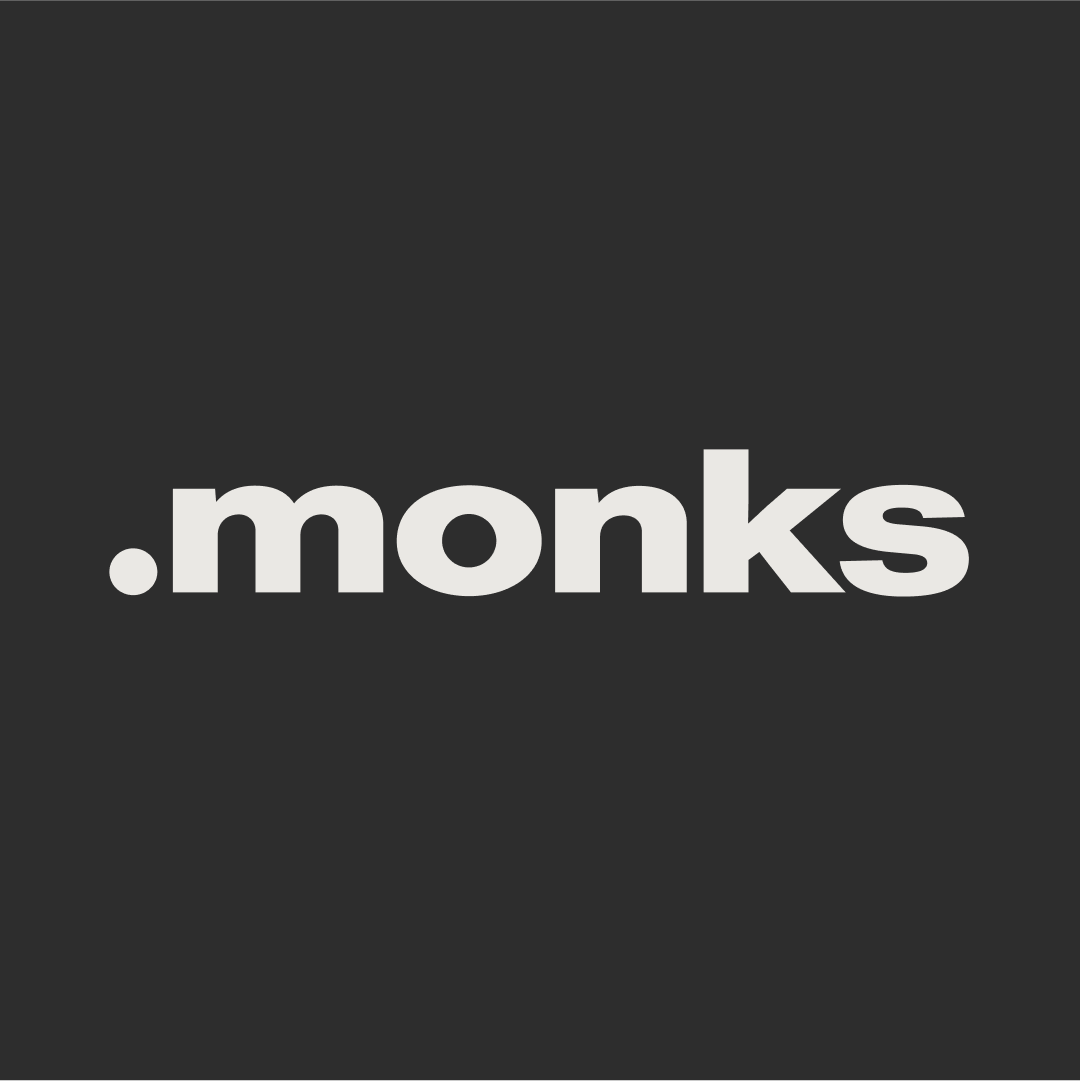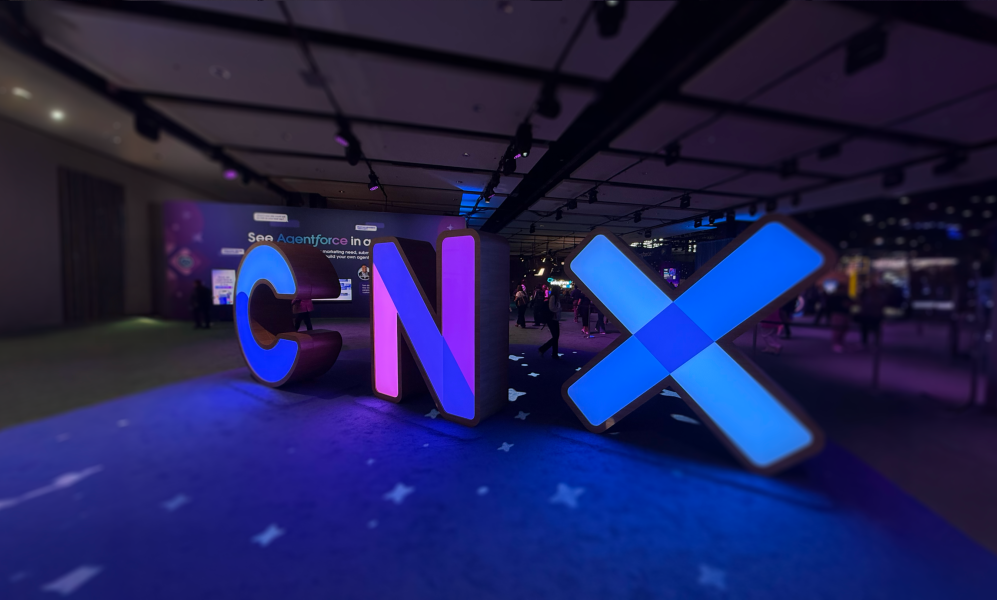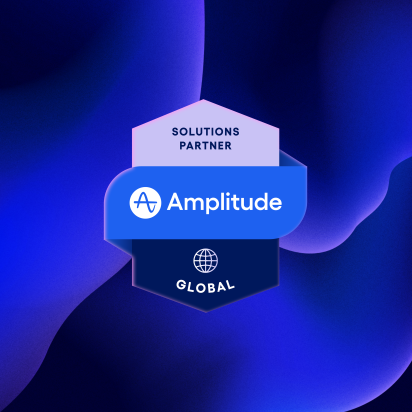Translating Ideas into Action at #Davos2020
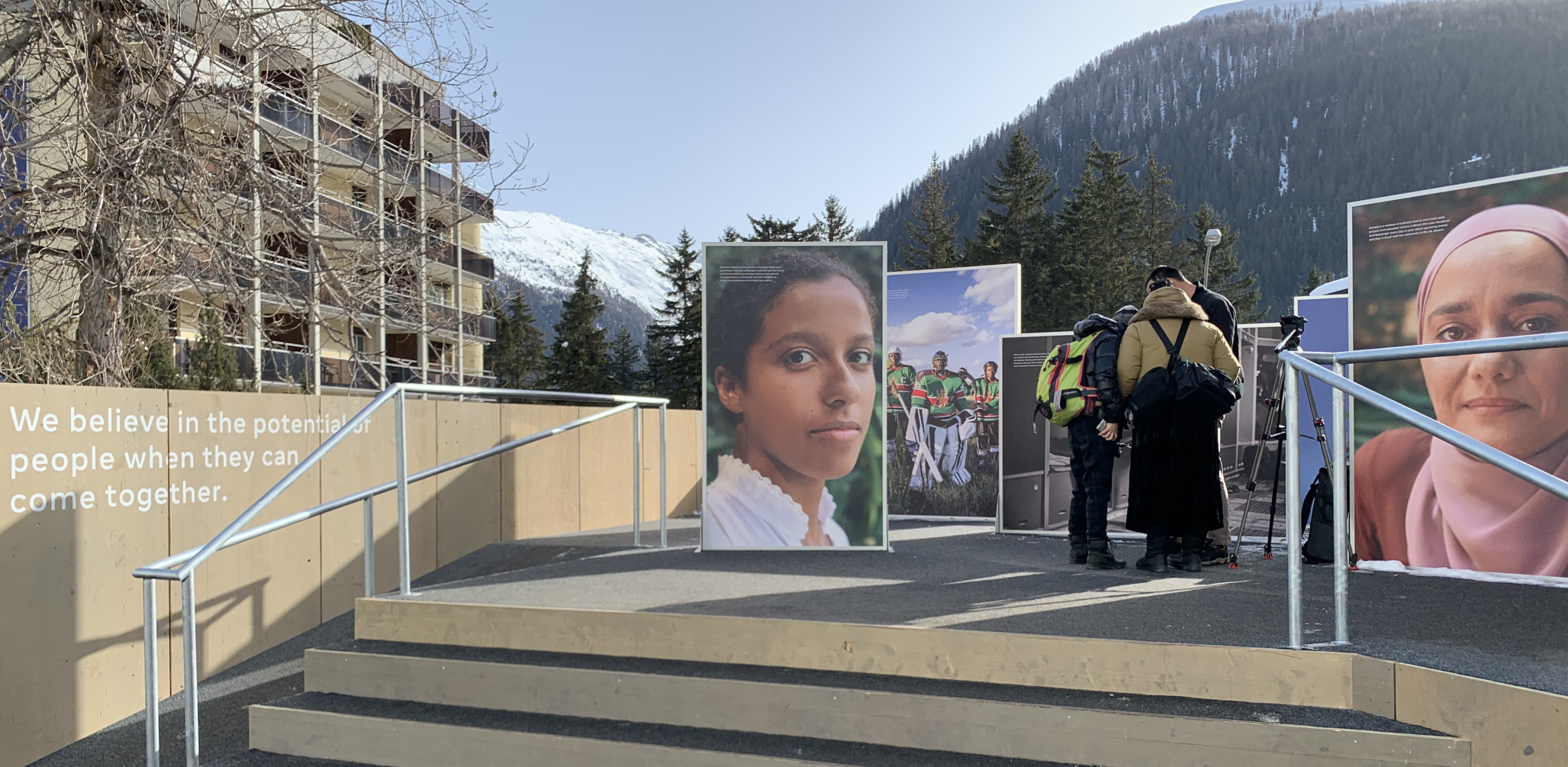
The 50th meeting of the World Economic Forum took place in Davos, Switzerland this week, where leaders across industries met to discuss the pressing matters of our time and engage with big ideas that are driving agendas across every sector.
At the conference, S⁴Capital Executive Chairman Sir Martin discussed the growth of markets around the world where he finds great potential. “I met with both the president and prime minister of Ukraine [Volodymyr Zelensky and Oleksiy Honcharuk], which was really interesting because they’re trying to build a Singapore on steroids and offer incentives for people,” he said. “They have their youngest prime minister, who’s very keen to reform and invest.”
He also touched upon developments around the world, including India, where MediaMonks recently merged with content house WhiteBalance. “We’re very bullish on Asia, in China and India despite the trade wars and tariffs. It’s amazing what some Chinese companies have done despite the trade wars.”
Elsewhere at this year’s conference, the theme focused on stakeholder capitalism, or the idea that a business must focus its efforts on the needs of not only shareholders or employees, but every stakeholder—including its customers, the communities it impacts and society as a whole. It’s a theme that demands change and asks that brands put plans into action for tangible effect.
In line with this need, MediaMonks aided two businesses whose technologies power initiatives around the world —IBM and Microsoft—by designing and building experiential activations that bring the impacts of their services to life. Both installations demonstrate the role of creative content in making sense of tough-to-grasp concepts, and how to effectively utilize a space to build lasting connections.
Build Value with Creative Content
IBM has called for a new business model built for the 21st century: the cognitive enterprise. While many brands may still feel a need to catch up to their peers in digital transformation, the cognitive enterprise is built around the idea that in today’s world, everyone is digital—and companies must evolve and reinvent themselves to remain competitive.
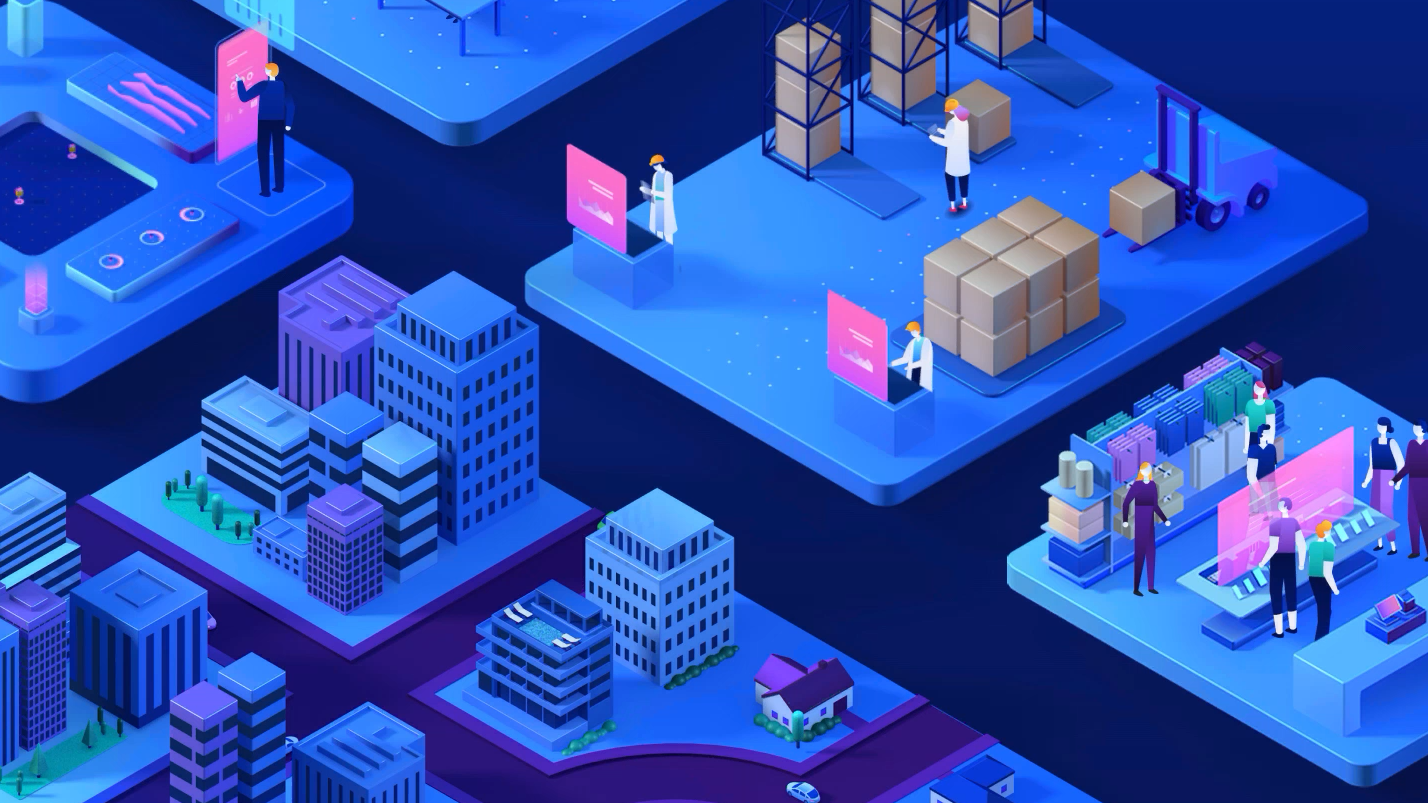
The content that drives our IBM exhibit puts the entire business ecosystem of the cognitive enterprise into perspective.
But what actually is a cognitive enterprise, how does one actually work, and what tools are available to help it function? These are the questions MediaMonks aimed to answer in a short, friendly and digestible way, translating IBM’s report on the model into an engaging and interactive exhibition.
At the IBM space, our installation invited attendees to explore each part of the cognitive enterprise across different industries: industrial, government, consumer and banking. Once attendees walk into the space, they see a series of LED walls and smart tables; placing a token on the table activates a demonstration featuring beautifully rendered, interactive animations that bring the cognitive enterprise to life through real-world context and application. After attendees get an overview of the Cognitive Enterprise, they are prompted to dive deeper into specific workflows which are activated by the tokens.
Giving meaning to the cognitive enterprise was key: “As enterprises continue on their transformation journey, the Cognitive Enterprise is IBM’s proprietary framework for businesses to solve their toughest business challenges and gain competitive advantage,” said Stephen Leps, Global Content Lead & Editor-in-Chief at IBM Services. “This activation showcases the latest ideas and examples of the Cognitive Enterprise brought to life, and more importantly goes deeper into ‘how’ organizations can derive maximum value through technology and become a smarter business.”
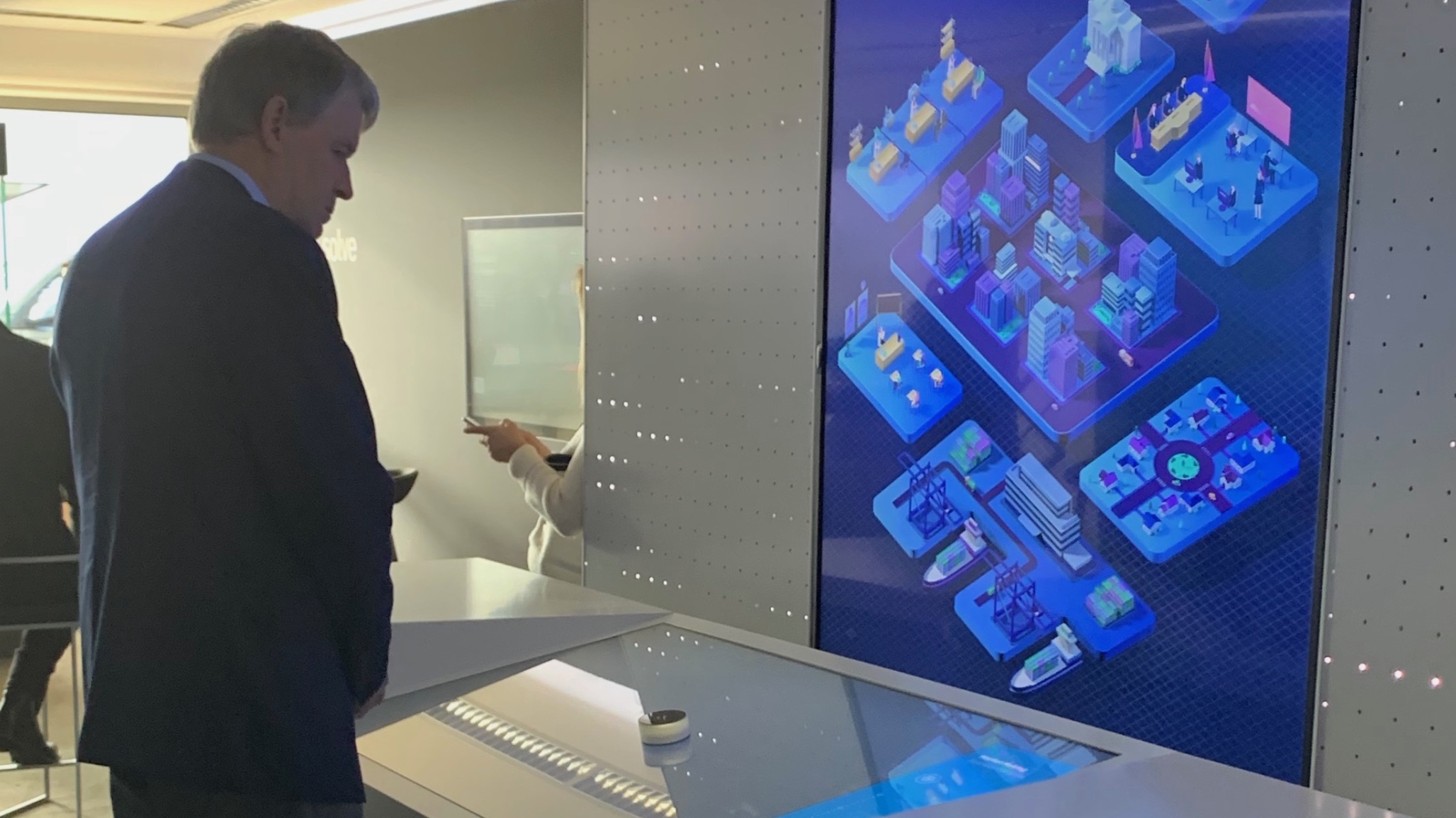
Encapsulating the many connections across a business ecosystem into a concise narrative was one of the most difficult parts of the process, as the cognitive enterprise can operate differently across different industries. “We wanted to offer an engaging, personalized experience for anyone interacting with the experience so they can tailor it to their specific business needs,” say Heather Hosey, VP of Client Engagement at MediaMonks.
Focus on Form and Function to Drive Impact
Such installations have become increasingly important at a time when our sense of connection has changed. Culture is defined by an intersection of physical and digital ecosystems, and experiential enables brands to tell their stories within a live experience—an important opportunity at a future-focused conference like Davos where so many leaders lay out their vision of the future.
On that note, Paige Kenmore, Senior Experiential Producer at MediaMonks, notes how critical it is to pay attention to the space you have at your disposal at an event or on the floor to ensure an enjoyable user experience. “From the beginning of the project, we were challenged with how to make a big impact experience in a small space meant to serve many purposes throughout the event,” says Kenmore. “Our team delivered on multiple aspects of the project to bring the space to life. This included the architectural design of the activation, content creation, lighting and sound design, software development and signage.”
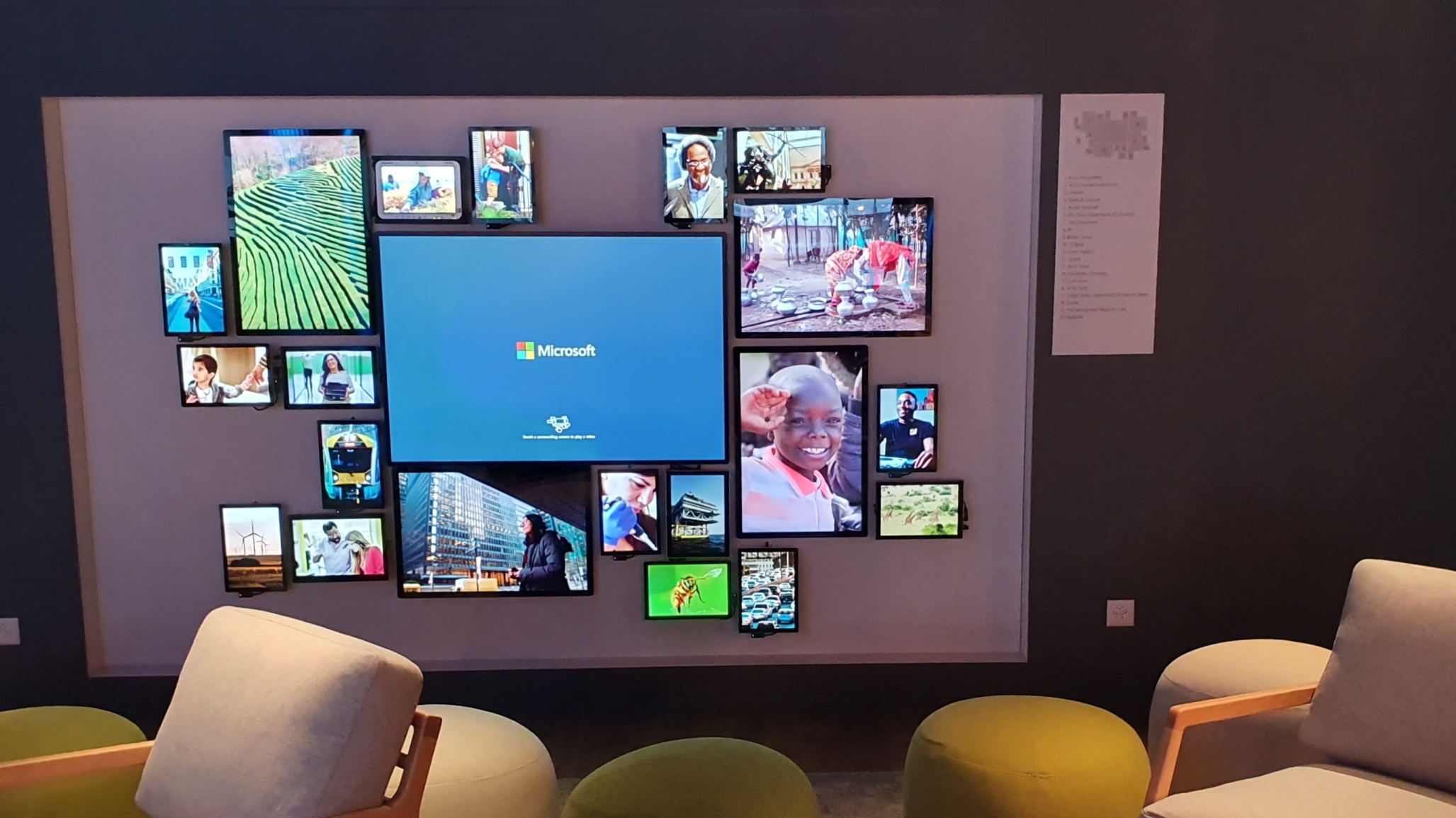
In addition to IBM, we worked with Microsoft to deliver human stories to attendees. Our mosaic wall installation—composed of a Microsoft Surface Hub 2S surrounded by smaller devices from partners like Samsung, HP, Lenovo and Panasonic—shared stories on 20 different initiatives for social good made possible through Microsoft technology. It has a bit of an artsy, gallery-wall vibe, and invites viewers to stop and engage through the tactile element of touch.
Showcasing the tech giant’s dedication to making an impact, the mosaic wall is quite versatile: it offers three different modes depending on the style of the event (for example, allowing viewers to interact by choosing a story to play on a showroom floor, or functioning as an aesthetically unique backdrop for keynote events).
These capabilities showcase the value of a multidisciplinary partner that understands both the physical and digital interactions that make a tech-driven experience. In a live experiential exhibition, these multiple components combine into a single coherent experience or interaction that delivers lasting impact to consumers or potential partners. This way, brands not only tell their stories, but immerse viewers in a way that substantiates their values and makes them more tangible and actionable—bringing the future a little bit closer to the present.
Related
Thinking
-
![A low-angle, wide shot of large, illuminated, three-dimensional letters spelling "CNX" in a dimly lit event hall. The 'C' glows blue, the 'N' glows purple, and the 'X' glows with a bright blue light. The letters are placed on a dark blue carpet with a subtle pattern, and they cast colorful reflections on the floor. In the blurred background, people can be seen walking around the conference space.]()
Blog post
Inside Salesforce Connections 2025 and the Conversational Potential of Agentic AI By Nathan Bouman 5 min read -
![Amplitude Global Solutions Partner Monks announcement banner and badge]()
Blog post
Driving Experimentation and AI Innovation with Amplitude By Sayf Sharif 5 min read -
![A man with dark, wavy hair stands with his back to the camera, wearing a mustard-yellow button-down shirt. He is looking at a large video wall composed of multiple screens, each glowing with bright, colorful, and abstract digital displays in a dimly lit room.]()
Blog post
Unlocking Growth on Amazon DSP with Human-Centered AI By Ladipo Fagbola 5 min read
Sharpen your edge in a world that won't wait
Sign up to get email updates with actionable insights, cutting-edge research and proven strategies.
Monks needs the contact information you provide to us to contact you about our products and services. You may unsubscribe from these communications at any time. For information on how to unsubscribe, as well as our privacy practices and commitment to protecting your privacy, please review our Privacy Policy.
